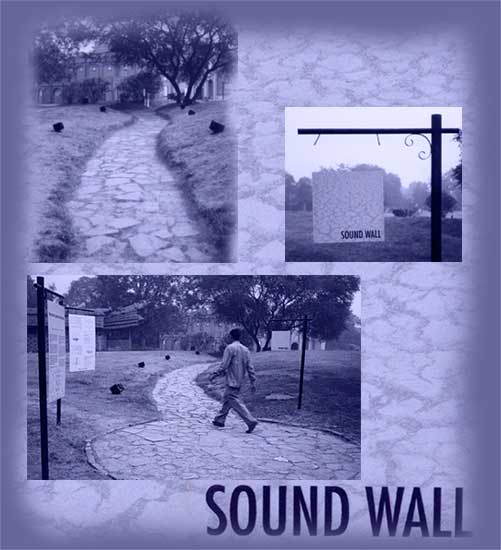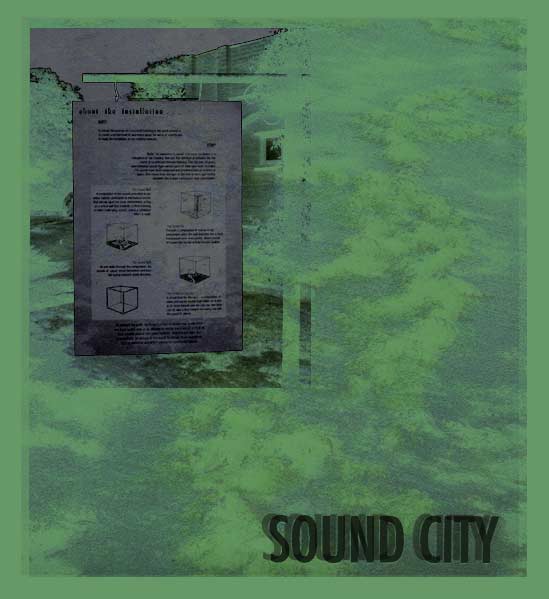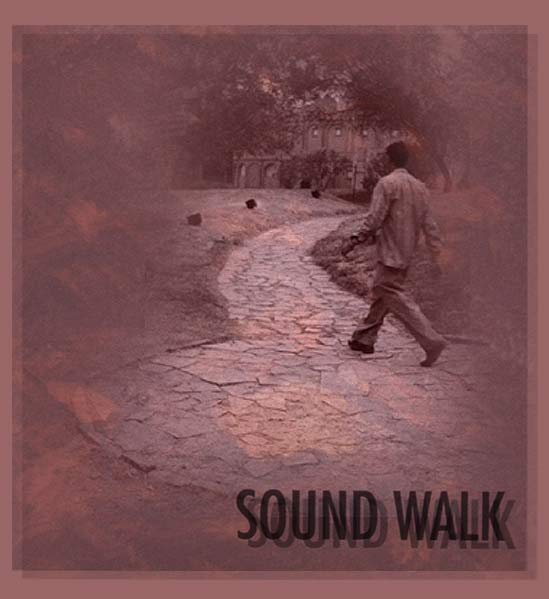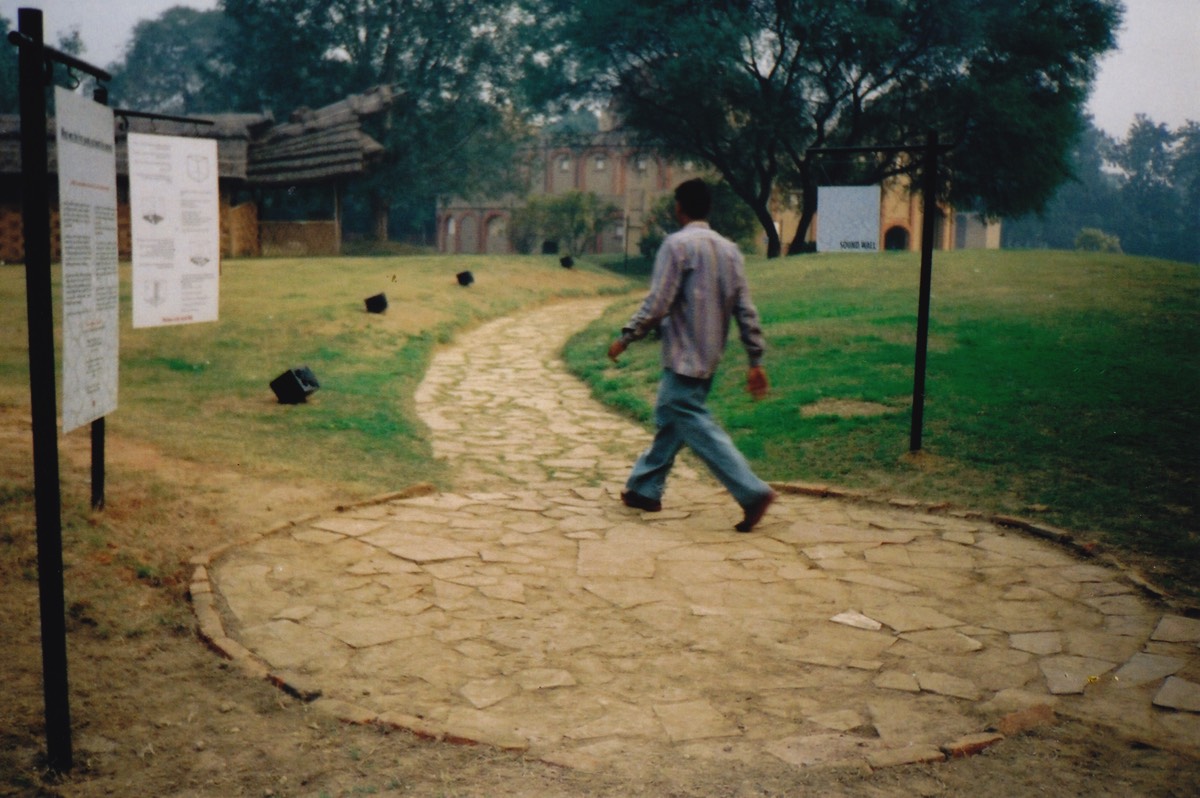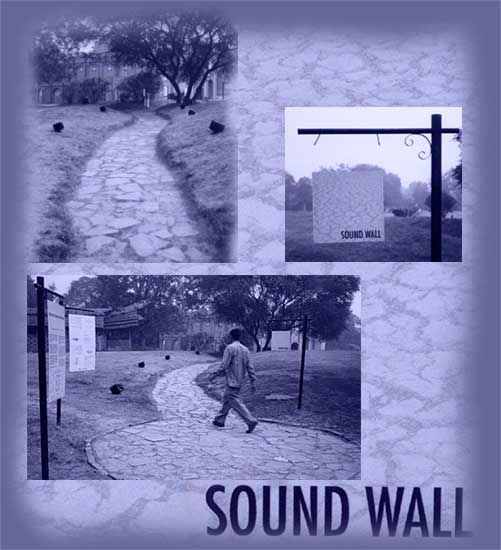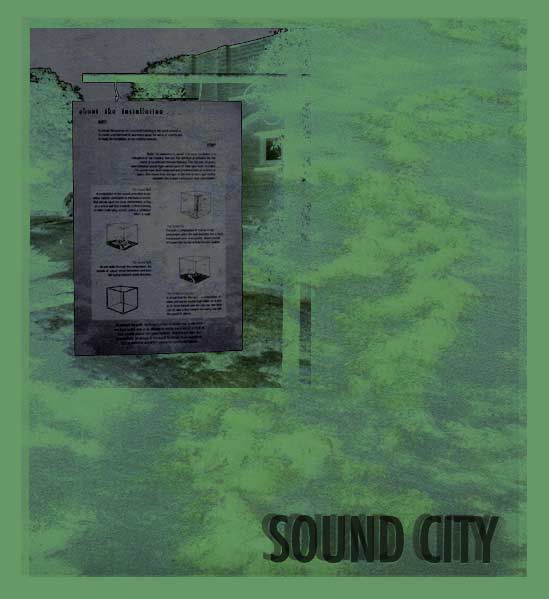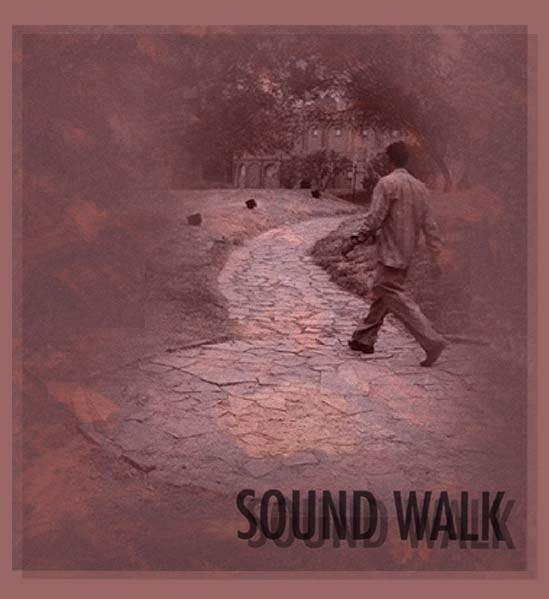A Sound Walk is...
a listening exercise that helps us become aware
of our immediate acoustic environment.
It is also about the aesthetic pleasures of listening.
Listening to sounds we might otherwise have missed;
listening to the rhythm of sounds;
listening for the unique 'voice' of a city.
It's about enjoying the sensual beauty and sheer surprise
of sound...
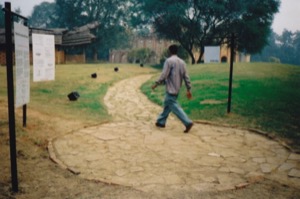
A Few Soundwalking Tips
a slow to moderate walking pace will help you to
focus on listening, with a relaxed frame-of-mind.
listen with with your eyes closed whenever possible.
what is the loudest sound you can hear
what is the quietest sound you can hear
listen for buildings that - hummmmm.
listen for - sounds of commerce.
can you hear the sound of your own footsteps.
how many times do you hear music playing.
would you have to shout to be heard.
what is the quietest sound you can hear.
A soundwalk is a form of active participation in the soundscape. Though the variations are many, the essential purpose of a soundwalk is to encourage the participant to listen discriminately and moreover, to make a critical judgement about the sounds heard and their contribution to the balance or imbalance of the sonic environment.
In order to expand the listening experience, sound-making may also become an important part of a soundwalk. Its purpose is to explore sounds that are related to the environment and on the other hand, to become aware of one's own sounds (voice, footsteps, etc.) in the environmental context. A soundwalk may be recorded in the form of a map, which the participant uses both to guide the route and draw attention to features of acoustic interest.
(Claude Schryer) (c.a.s.e, the canadian association for sound ecology, richard windeyer)
(handbook of acoustic ecology, ed. Barry Truax)
The Natural Soundscape…
The rythms of the universe are infinitely various. Some are of such magnitude as to be incomprehensible. For instance, the creation of the world was but one pulse in a great universal symphony of creation and destruction. Other rythms are too rapid to be perceived and can only be designated as 'happenings' which, in huge multiplication, give rise to the tiniest recorded events. For example, an instant in the life of a waterfall.
R.Murray Schafer
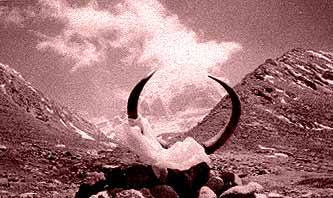
The natural environment contains many sets of rythms: those distinguishing day from night, sun from moon, summer from winter. To all things there is a season. There is a time for light and a time for darkness, a time for activity and a time for rest, a time for sound and a time for not-sound. If we listen to the natural soundscape, we would observe an infinitely complex series of oscillations as activity rises and falls from exertion to slumber, from life to death.
Also, just as the natural landscape allows for long-range viewing, the natural soundscape allows the listener to hear further into the distance. The natural soundscape therefore is generally considered to be more hi-fi than a city soundscape. In a hi-fi soundscape, sounds overlap less frequently; there is perspective - the foreground and the background are distinctly discernible.
In a low-fi soundscape, such as on a busy road, inside a car or in an air-conditioned environment, individual acoustic signals are obscured, behind walls of - usually - motorized sounds. A footstep on sand, water flowing or an animal scurrying in a bush - are all masked by broad-band noise. Perspective is lost and there is no distance. In order for the most ordinary sounds to be heard, they have to be increasingly amplified.
In the quiet ambience of the hi-fi soundscape, even the slightest sound or disturbance can convey vital or interesting information to those attuned to it. For example, shepherds, farmers and woodsman can recognize these as clues to impending changes in their environment. In literature too, we can find many references to such subtle aspects of the natural soundscape.
Goethe, with his ear pressed to the grass writes:
"When I hear the humming of the little world among the stalks, and am near the countless indescribable forms of worms and insects, then I feel the presence of the Almighty, Who created us in his own image..."
The Sound of…

The sound of ether is self-contained, and holds all forms and colors. It is the basis of all sounds, and is the undertone which is continuous. Its instrument is the human body, because it can be audible through it; although it is all pervading, yet it is unheard. It manifests to man as he purifies his body from the material properties. The body can become its proper instrument when the space within is opened, when all the tubes and veins in it are free. Then the sound which is externally in space becomes manifest inwardly also. Ecstacy, illumination, restfulness, fearlessness, rapture, joy and revelation are the effects of this sound.

The sound of water is deep, its form is serpent-like, its color green, and it is best heard in the roaring sea. The sound of running water, of mountain rills, the drizzling pattern of rain, the sound of water running from pitcher into a jar, from pipe into a tub, from bottle into a glass, all have a smooth and lively effect, and a tendency to produce imagination, fancy, dream, affection and emotion. The instrument called jalatarang is an arrangement of china bowls or glasses graduated in size and filled with water in proportion to the desired scale; more water lowers tone and less raises it. These instruments have a touching effect upon the emotions of the heart
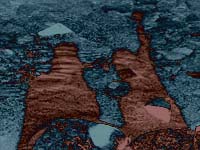
The sound of air is wavering, its form zig-zag and its color blue. Its voice is heard in storms, when the wind blows and in the whisper of the morning breeze. Its effect is breaking, sweeping and piercing. The sound of air finds expression in all wind instruments made of wood, brass and bamboo... Krishna is always portrayed in Indian art with a flute. The air sound overpowers all other sounds, for it is living and in every aspect it influences, producing ecstacy.


The Life Absolute from which has sprung all that is felt, seen and perceived, and into which all again merges in time, is a silent, motionless and eternal life which among the Sufis is called Zat.Every motion that springs forth from this silent life is a vibration and a creator of vibrations. Within one vibration are created many vibrations; as motion causes motion so the silent life becomes active, thereby losing its original peace. It is the grade of activity of these vibrations that accounts for the various planes of existence. These planes are imagined to differ from one another, but in reality they cannot be entirely detached and made seperate from one another. The activity makes them grosser, and thus the earth is born of the heavens.

Sound as Origin...
In the beginning was the Word, and the word was God, says the Bible. Creation myths as expounded in the Upanishads, show Akasaas the base of the macrocosm. The universe is seen to be made up of five primal elements. The Vedas distinguish between these elements on the basis of their 'subtlety'. The 'subtlety' of an element is determined by the nature of its perceptibility. The greater the number of sense organs to which the element is perceptible, the more gross it is seen to be. Hence we have:
| Element | Quality | Perceptible to | |
| SPACE - Akasa | Sound | Ear | |
| AIR - Vayu | Sound, Touch | Ear, Skin | |
| FIRE - Agni | Sound, Touch, Sight | Ear, Skin, Eye | |
| WATER - Apa | Sound, Touch, Sight, Taste | Ear, Skin, Eye, Tongue | |
| EARTH - Prithivi | Sound, Touch, Sight, Taste, Smell | Ear, Skin, Eye, Tongue, Nose |
As we peel off the dense layers and withdraw from the distractions of the grosser sense perceptions, we move to subtler realms and finally to sound. Thus Akasaor space, holds within it sound and from it proceed the other elements. They draw their energy from the vibration that resides in Akasa.
To experience sound at its point of origin, where it alone exists, is to experience it as unified energy before it becomes split and objectified as something outside of us. The practice of dissociating sound from other elements leads us closest to the substratum of the universe.
